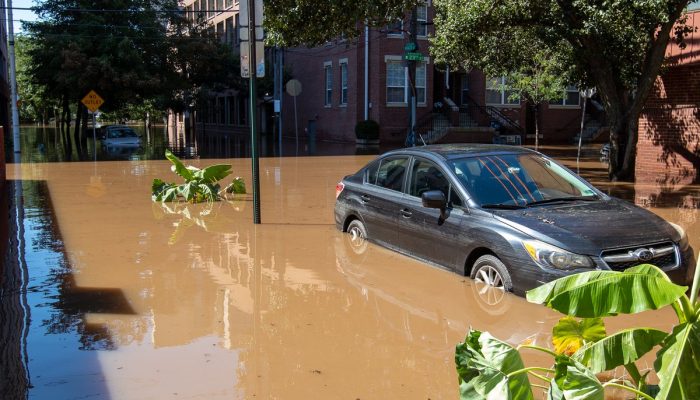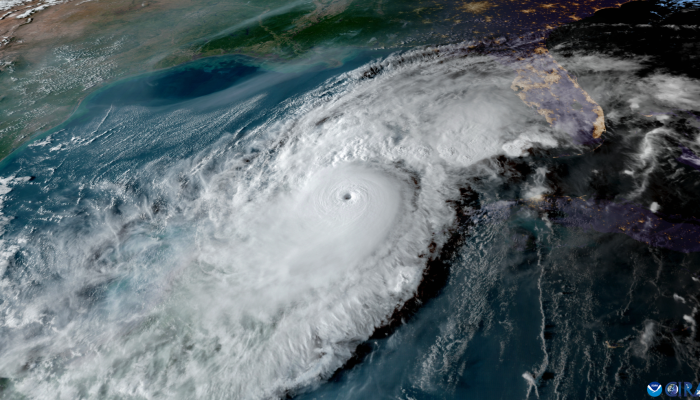The month of March not only ushers in the spring season, but also concern for flooding that can seriously impact our lives, homes, businesses, and bank accounts.
As winter becomes spring on March 20, the National Weather Service (NWS) designates the days that follow Flood Awareness Week in Pennsylvania to highlight these risks.
Flooding is the most common, and costly, natural disaster in Pennsylvania and claims billions of dollars in damage and unfortunately, people’s lives, every year in the United States. This hazard is featured in our 2022 update of the City’s Hazard Mitigation Plan.
You need only look at headlines and your social media timelines over the past two years with severe storms Isaias, Ida, and the July 2021 extreme rain event to see the impact flooding has on Philadelphia’s residential and business communities.
You may ask, “Why should I care, do I live in a floodplain, am I at risk, what can I do?”.
Wherever it rains it can flood. Flooding can happen in every neighborhood in the city and county in the state. In fact, the Pennsylvania Emergency Management Agency’s flood map (PDF) shows you that most flooding reported to the National Weather Service happens outside the 100-year flood zone!
What can you do? Mitigation is a word heavily used in emergency management, but what it boils down to is protecting the things that you value in life, including your loved ones, property, and belongings from risks.
Take simple steps now to prepare for and mitigate flooding risks.
Be informed
- Know the difference between a National Weather Service Advisory, Watch, and Warning.
- Flood Watch: Flooding is possible, be prepared.
- Flood Advisory: Flooding is imminent, use caution.
- Flood Warning: Flooding is happening, take action.
- The National Weather Service may also issue Flash Flooding. This happens usually when a large amount of rainfall happens in a shorter period. Urban areas, like Philadelphia, are more prone to flash flooding due to lesser vegetation and more run-off that can overwhelm sewage systems. It does not have to rain in our area for a Flash Flood alert to be issued.
- Get free text alerts and emails through our ReadyPhiladelphia program for NWS alerts and critical info from the City. Text READYPHILA to 888-777 for alerts to your phone or visit our ReadyPhiladelphia page to customize your email or text alerts for locations important to you.
- Know your local flood risks. The NWS Advanced Hydrological Prediction Service issues river flooding guidance for rainfall events based on river flood gauge readings. Residents can subscribe for e-mails or text messages from the U.S. Geological Survey WaterAlert Services when real-time data exceeds certain thresholds.
- For a comprehensive look at flooding in Philadelphia, including what you should know and more tips around your property, visit the Flood Risk Management Task Force Guide to Flooding.
Make a plan
- Have an emergency plan that includes a go-bag, evacuation location, contact information, health details, important documents, and includes the needs of everyone in your house, even your pets!
- Know your neighbors. Make sure you know people on your block, especially those are more vulnerable who may be older or have health or mobility concerns. Check-in with them before a severe storm to make sure they are aware of hazards or emergency instructions.
Be insured
- An inch of water can cause $25,000 in damage. Talk to your insurance agent to see what is covered in your policy. Flooding insurance is not covered under your homeowner’s policy and typically takes time to go into effect when added.
- Know your risk. FEMA updated the National Flood Insurance Program (NFIP) to deliver more equitable flood insurance pricing that better reflects a property’s actual flood risk. This program is called Risk Rating 2.0! To learn more about Risk Rating 2.0, visit FEMA’s website.
- You can reduce the cost of NFIP rates by implementing mitigation projects (PDF) on your home.
Property check
- Examine the outside of your property and check the foundation for any cracks. If you have them, use sealant, mortar, or masonry caulk to fill them to help keep water out.
- Change your landscape! Look for places where water can collect or flow around and towards your home and change the landscape so water slopes away from your property.
- To help avoid water damage inside your home, consider installing a sump pump or a backflow valve to push the flow of water and sewer backup away from your home.
- Look at service equipment and appliances in the lowest level of your home and consider raising and anchoring items onto platforms at least one foot above potential flood levels.
- If there is potential for flooding due to an approaching storm, get valuables and electronics off the lowest floor of your home. Also, clean your home’s gutters along with litter from your block’s storm inlets.
Traveling
- Turn Around: Don’t Drown! Never drive around barricades or through floodwaters. As little as six inches of water can cause you to lose control of your vehicle. Twelve inches can carry away a car. There could be hidden dangers as well.
- Be aware of parking or driving in low-lying areas such as an underpass. During severe storms with heavy rainfall, a low-lying area or underpass can become dangerously flooded within minutes as water overwhelms drainage systems. Relocate your car before the storm. If you typically have an underpass on your way home, look for an alternate route.
- Avoid walking near or in floodwater, which can be murky, fast moving, and deep.
- Driving at night can be extra dangerous when it can be harder to recognize flood dangers.




